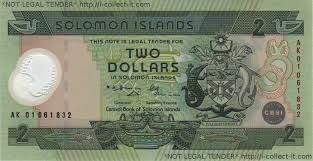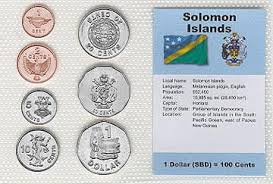Varian VnmrJ
VNMRJ is the software interface that controls the Varian NMR spectrometers at the Biomolecular NMR Facility. This document provides a quick overview of the program and guides you through several routine procedures required for data acquisition. There are several places that you can go for help to learn more about the software and its use. A detailed description of VNMRJ can be found in the users manual, which can be accessed from the Help menu of the software. Additionally, I recommend you to check the VNMR command and Parameter Reference Manual that generally sits next to the computer on each spectrometer. There you can find the definitions of many parameters and learn about many useful commands. Also, pulse sequence specific instructions can be obtained by typingman(‘pulse_sequence_name’) on the VNMRJ command line and can be visualized under the Text Out folder (see below). Finally, I strongly recommend that you learn some Linux commands so you can interact with the computer’s operating system when needed.
Starting VNMRJ
Log in to the workstation by typing your user account and password at the login screen. Click on the VNMRJ icon located on the menu bar at the top of the screen to load the VNMRJ v2.1B liquids interface.
The VNMRJ Liquids Interface
As shown in the figure below, the VNMRJ liquids interface is divided into different regions. A brief description of the major features of the interface will follow. For a more detailed discussion please read theVNMRJ Liquid Users Manual that can be accessed from the “Help” menu.
Locator. Provides easy access to datasets, shims, parameters, etc.
Holding Pen. This area is used to store commonly accessed files from the locator.
Hardware Bar. Contains monitors for temperature, lock level, spinning rate, acquisition status, error messages, etc.
Command Line. Here is where you can enter commands to interact with the software.
Graphics Canvas. This area is used to display FIDs, spectra and pulse sequences.
Graphic Controls. These buttons are used to interact with the FID or spectra and they change according to the type of data displayed in the graphics canvas. The figure below shows the available functions when one and two-dimensional spectra are displayed.
Interacting with the software
There are different ways to interact with the software. You can click on a button to execute an action (or command), you can type a command in the command line, you can select an action from a drop down menu in the menu bar, or you can input parameters and/or commands in text boxes within folder pages.
The numeric value of certain buttons, like the ones under the Lock and Shim folders in the Setup Tab, can be modified in several ways. For example, you can increase or decrease the value a set amount by right or left clicking, respectively, with the mouse. You can also toggle though three preset increments (1, 10, and 100) by clicking the middle mouse button. The preset increment values can be modified by pressing the <Shift> key and the middle mouse button. Additionally, by pressing the <Shift> key and the left mouse button it is possible to set the numeric value of a given button.
VNMRJ has memory slots, called experiments, where the acquired datasets are stored. You can change between experiments using the jexp (join experiment) command. For example, if you are currently using experiment 1 (or Exp1) and want to join experiment 2 you need to type jexp2 in the command line. To check how many experiments exist in your user account and what datasets are stored on each one, type explib and clicking on the Text Out folder of the Acquire tab.
Recommendations for Sample Preparation
High quality data begins with a high quality sample. Please use NMR tubes that are appropriate for the spectrometer frequency and application you plan to work with. Vendors like Aldrich, Wilmad, Norell, etc., offer several grades of NMR tubes that include anything from disposable to high quality glass tubes. If you have questions concerning the type of NMR tube need for your experiment please let me know and I'll be happy to help you select the right one.
Recommended sample volumes are 550ml for regular 5mm tubes, 270-330ml for Shigemi tubes, and 270ml for Squashed (3x6 mm) Shigemi tubes. Make sure your sample has no bubbles, no precipitate at the bottom of the NMR tube, and that it isn’t cloudy. Finally, Wipe the tube with a lint-free tissue to remove fingerprints and/or other impurities before inserting it into the magnet.
Preferred NMR buffers for Biomolecular experiments are those without protons that can give large background signals. Phosphate-based buffers are used very commonly. Other buffers like TRIS, HEPES, etc., and additives like DTT, BME, and detergents can also be used but they all have protons. Deuterated versions of many of these chemicals are available at high cost and therefore are only used when it is absolutely necessary. The use of 0.04% Sodium Azide is highly recommended to avoid growth of microorganisms for samples used in multiday experiments. The common pH range for HN-directed experiments is between 4 and 7.5. Higher pH will promote HN exchange with the buffer and reduce the number of signals in your experiment.
Samples with high salt concentrations, > 150 mM, loaded in round 5 mm NMR tubes are not recommended when using cold probes. The Biomolecular NMR facility has a couple of salt tolerant cold probes (Apollo and Pele800) that allow measurments on salty samples but require the use of Squashed (3x6 mm) Shigemi NMR tubes.
High quality data begins with a high quality sample. Please use NMR tubes that are appropriate for the spectrometer frequency and application you plan to work with. Vendors like Aldrich, Wilmad, Norell, etc., offer several grades of NMR tubes that include anything from disposable to high quality glass tubes. If you have questions concerning the type of NMR tube need for your experiment please let me know and I'll be happy to help you select the right one.
Recommended sample volumes are 550ml for regular 5mm tubes, 270-330ml for Shigemi tubes, and 270ml for Squashed (3x6 mm) Shigemi tubes. Make sure your sample has no bubbles, no precipitate at the bottom of the NMR tube, and that it isn’t cloudy. Finally, Wipe the tube with a lint-free tissue to remove fingerprints and/or other impurities before inserting it into the magnet.
Preferred NMR buffers for Biomolecular experiments are those without protons that can give large background signals. Phosphate-based buffers are used very commonly. Other buffers like TRIS, HEPES, etc., and additives like DTT, BME, and detergents can also be used but they all have protons. Deuterated versions of many of these chemicals are available at high cost and therefore are only used when it is absolutely necessary. The use of 0.04% Sodium Azide is highly recommended to avoid growth of microorganisms for samples used in multiday experiments. The common pH range for HN-directed experiments is between 4 and 7.5. Higher pH will promote HN exchange with the buffer and reduce the number of signals in your experiment.
Samples with high salt concentrations, > 150 mM, loaded in round 5 mm NMR tubes are not recommended when using cold probes. The Biomolecular NMR facility has a couple of salt tolerant cold probes (Apollo and Pele800) that allow measurments on salty samples but require the use of Squashed (3x6 mm) Shigemi NMR tubes.
Sample holders
The Biomolecular NMR facility has several generations of 5mm room temperature and cold probes. Therefore, you have to be aware of the sample holder requirements for each probe. All the room temperature probes and the cold probes of pele500 and pele600 use the normal sample holders (A, see picture below). On the other hand, the salt tolerant cold probes of pele800 and Apollo can only use the special sample holders B (for 5mm/Shigemi tubes) and C (Squashed tubes).
 Use the Depth Gauge to center the column of liquid in the NMR tube within the receiver coil area indicated by a dashed box.
Use the Depth Gauge to center the column of liquid in the NMR tube within the receiver coil area indicated by a dashed box.

The Biomolecular NMR facility has several generations of 5mm room temperature and cold probes. Therefore, you have to be aware of the sample holder requirements for each probe. All the room temperature probes and the cold probes of pele500 and pele600 use the normal sample holders (A, see picture below). On the other hand, the salt tolerant cold probes of pele800 and Apollo can only use the special sample holders B (for 5mm/Shigemi tubes) and C (Squashed tubes).
Inserting the sample in the magnet
To insert the sample in the magnet go to the Setup Tab and click the Eject Sample button (see figure below). You will hear the eject air turn on.
 Put the sample holder and NMR tube on top of the magnet and then in the computer click on the Inject Sample button. The eject air will turn off and the sample will slowly drop to the center of the magnet.
Put the sample holder and NMR tube on top of the magnet and then in the computer click on the Inject Sample button. The eject air will turn off and the sample will slowly drop to the center of the magnet.

To insert the sample in the magnet go to the Setup Tab and click the Eject Sample button (see figure below). You will hear the eject air turn on.
Setting the temperature
After inserting the sample in the magnet, click on the Setup Tab and select the Spin & Temp folder. In this window you should enter the temperature set point in the text box, as indicated in the figure below, and click on the Regulate Temperature at this Value button. Please use the temperature calibration curve for the probe you’re using to find the correct temperature value. The calibration curve can be found on the black notebook sitting on the desk of every spectrometer or at http://utswbionmr.swmed.edu/calibrations.html.
The radial buttons below the Current temperaure display instruct VNMRJ how to handle temperature errors during data acquisition. As a default, I have activated the first one, Abort experiment on error, in all spectrometers. This means that if the temperature of the probe is unstable during data acquisition the experiment will abort automatically and you will see an "Acquisiton Error Code 2" displayed above the command line and at the bottom of the VNMRJ window. You can change this setting to allow the spectrometer to continue acquiring data and only issue a warning, Issue warning on error, or Ignore temperature errors. I strongly recommend againts it since there could be a problem with the experiment and your data may be compromised.
I will recommend that you activate the check box to Control the temperature from this panel only to avoid resetting the temperature when new experimental parameters are loaded. If this box isn't checked, you will have to use the vttype command to allow (vttype=2) or disallow (vttype=0) temperature changes.

After inserting the sample in the magnet, click on the Setup Tab and select the Spin & Temp folder. In this window you should enter the temperature set point in the text box, as indicated in the figure below, and click on the Regulate Temperature at this Value button. Please use the temperature calibration curve for the probe you’re using to find the correct temperature value. The calibration curve can be found on the black notebook sitting on the desk of every spectrometer or at http://utswbionmr.swmed.edu/calibrations.html.
The radial buttons below the Current temperaure display instruct VNMRJ how to handle temperature errors during data acquisition. As a default, I have activated the first one, Abort experiment on error, in all spectrometers. This means that if the temperature of the probe is unstable during data acquisition the experiment will abort automatically and you will see an "Acquisiton Error Code 2" displayed above the command line and at the bottom of the VNMRJ window. You can change this setting to allow the spectrometer to continue acquiring data and only issue a warning, Issue warning on error, or Ignore temperature errors. I strongly recommend againts it since there could be a problem with the experiment and your data may be compromised.
I will recommend that you activate the check box to Control the temperature from this panel only to avoid resetting the temperature when new experimental parameters are loaded. If this box isn't checked, you will have to use the vttype command to allow (vttype=2) or disallow (vttype=0) temperature changes.
Operating the FTS Cooling Unit
If the temperature of your experiment needs to be below 25°C you will have to use the FTS system to cool down the air going into the probe. The FTS system is composed of two parts, the temperature controller (top in figure below) and the Jet-Air cooling unit (bottom).
 Before turning the FTS system on make sure that the Dew Point monitor in the room shows lower than -60°C. If this condition isn’t met please stop what you’re doing and contact me as soon as possible. If the compressed air isn’t dry enough moisture will freeze inside the Jet-Air cooling unit and will block the air going into the probe. This situation could result in damage to the probe and your sample.
Before turning the FTS system on make sure that the Dew Point monitor in the room shows lower than -60°C. If this condition isn’t met please stop what you’re doing and contact me as soon as possible. If the compressed air isn’t dry enough moisture will freeze inside the Jet-Air cooling unit and will block the air going into the probe. This situation could result in damage to the probe and your sample.
After making sure the Dew point is right:
1. Turn the power switch of the temperature controller on and use the up or down arrows to set the temperature at least 10°C below the desired sample temperature.
2. Turn the power switch of the Jet-Air cooling unit on and wait 30 min for the temperature to equilibrate before you begin data acquisition.
When your experiment is done:
3. Turn the Jet-Air unit power switch off.
4. Set the temperature controller to 15°C, and wait one hour before turning the temperature controller off. If you don’t follow these steps very cold air will reach the probe and damage can occur.
If the temperature of your experiment needs to be below 25°C you will have to use the FTS system to cool down the air going into the probe. The FTS system is composed of two parts, the temperature controller (top in figure below) and the Jet-Air cooling unit (bottom).
After making sure the Dew point is right:
1. Turn the power switch of the temperature controller on and use the up or down arrows to set the temperature at least 10°C below the desired sample temperature.
2. Turn the power switch of the Jet-Air cooling unit on and wait 30 min for the temperature to equilibrate before you begin data acquisition.
When your experiment is done:
3. Turn the Jet-Air unit power switch off.
4. Set the temperature controller to 15°C, and wait one hour before turning the temperature controller off. If you don’t follow these steps very cold air will reach the probe and damage can occur.
Tuning the Probe
Tuning the NMR probe is similar to tuning a radio. In order to obtain good reception you have to tune to the correct frequency. Basically, the probe functions as the antenna and the NMR spectrometer as the radio. A typical household radio can be tuned to a range of frequencies that include the AM and FM bandwidths. Each channel in the spectrometer can be tuned to the frequency of a given nuclei, but before doing so, we have to load a parameter set to let it know which frequencies we want to listen to. All the spectrometers at the Biomolecular NMR facility have four channels. For most biomolecular NMR experiments, channel 1 is dedicated to proton, channel 2 to carbon, channel 3 to nitrogen, and channel 4 to deuterium.
The following procedure will work for most indirect detection experiments:
1. Join experiment 1, if not already there, by typing jexp1 in the command line.
2. Type gNhsqc in the command line to load the parameters for a 1H,15N-HSQC experiment. In these parameters, tn=H1 (transmitter or channel 1), dn=C13 (decoupler 1 or channel 2), and dn2=N15 (decoupler 2 or channel 3).
3. Type su in the command line.
The hardware in the NMR console is now ready and you can proceed to tune the probe. Before doing so, please be aware that our facility houses a couple different generations of NMR spectrometers. The older ones, Pele500 and Pele600, have a master clock (or Internal Frequency, IF) running at 10.5 MHz. On the other hand, the newer spectrometers, Saturn500, Artemis, Apollo, and Pele800 have an IF of 20 MHz. This is important to know because the hardware and thus the re-cabling required during tuning will be different. Additionally, tuning for proton is different between room temperature probes and cold probes. Here are a few pictures of the different preamplifiers and the tuning interfaces:


Tuning the NMR probe is similar to tuning a radio. In order to obtain good reception you have to tune to the correct frequency. Basically, the probe functions as the antenna and the NMR spectrometer as the radio. A typical household radio can be tuned to a range of frequencies that include the AM and FM bandwidths. Each channel in the spectrometer can be tuned to the frequency of a given nuclei, but before doing so, we have to load a parameter set to let it know which frequencies we want to listen to. All the spectrometers at the Biomolecular NMR facility have four channels. For most biomolecular NMR experiments, channel 1 is dedicated to proton, channel 2 to carbon, channel 3 to nitrogen, and channel 4 to deuterium.
The following procedure will work for most indirect detection experiments:
1. Join experiment 1, if not already there, by typing jexp1 in the command line.
2. Type gNhsqc in the command line to load the parameters for a 1H,15N-HSQC experiment. In these parameters, tn=H1 (transmitter or channel 1), dn=C13 (decoupler 1 or channel 2), and dn2=N15 (decoupler 2 or channel 3).
3. Type su in the command line.
The hardware in the NMR console is now ready and you can proceed to tune the probe. Before doing so, please be aware that our facility houses a couple different generations of NMR spectrometers. The older ones, Pele500 and Pele600, have a master clock (or Internal Frequency, IF) running at 10.5 MHz. On the other hand, the newer spectrometers, Saturn500, Artemis, Apollo, and Pele800 have an IF of 20 MHz. This is important to know because the hardware and thus the re-cabling required during tuning will be different. Additionally, tuning for proton is different between room temperature probes and cold probes. Here are a few pictures of the different preamplifiers and the tuning interfaces:
Tuning the Room Temperature Probe on Pele500 or Pele600 (10.5 MHz IF)
Tuning for Proton
1.-Unplug the “Probe” cable from the filter, square box, located at the proton pre-amp (J5301) and plug it into the socket labeled “Probe” (J5321).
2.-Move the cable from the pre-amp “Output” (J5302) to the “Tune Output” socket (J5323).
3.-Select “channel 1” on the dial below the small LCD screen at the tune interface and make sure the attenuator is set to 9.
4.-Locate the proton tuning rod under the probe. This tuning rod has two knobs, the upper one is the 1H tune and the bottom one is the 1H match. Begin by adjusting the 1H tune until the reflected power value (number on the LCD screen) is as low as possible. Next, adjust the 1H match in a similar manner. Repeat the procedure until the reflected power reaches a minimum (typically between 000 and 008). Always use the 1H tune for the last adjustment.
5.-Select “channel 0” at the tune interface and move the cables back to their original position.

Tuning for Carbon, Nitrogen, or Deuterium
1.-Look at the probe and find the cable for the heteronuclei you want to tune. Follow this cable to its other end and unplug it from the filter (silver cylinder). Plug it into the “Probe” socket (J5321).
2.-Move the cable from the broadband pre-amp “Output” (J5312) to the “Tune Output” socket (J5323).
3.-Select the appropriate channel (2 for carbon, 3 for nitrogen, and 4 for deuterium) at the tune interface and adjust the tuning rod until the reflected power is as low as it can go.
4.-Set the channel back to 0 and move the cables to their original position.

Tuning for Proton
1.-Unplug the “Probe” cable from the filter, square box, located at the proton pre-amp (J5301) and plug it into the socket labeled “Probe” (J5321).
2.-Move the cable from the pre-amp “Output” (J5302) to the “Tune Output” socket (J5323).
3.-Select “channel 1” on the dial below the small LCD screen at the tune interface and make sure the attenuator is set to 9.
4.-Locate the proton tuning rod under the probe. This tuning rod has two knobs, the upper one is the 1H tune and the bottom one is the 1H match. Begin by adjusting the 1H tune until the reflected power value (number on the LCD screen) is as low as possible. Next, adjust the 1H match in a similar manner. Repeat the procedure until the reflected power reaches a minimum (typically between 000 and 008). Always use the 1H tune for the last adjustment.
5.-Select “channel 0” at the tune interface and move the cables back to their original position.
Tuning for Carbon, Nitrogen, or Deuterium
1.-Look at the probe and find the cable for the heteronuclei you want to tune. Follow this cable to its other end and unplug it from the filter (silver cylinder). Plug it into the “Probe” socket (J5321).
2.-Move the cable from the broadband pre-amp “Output” (J5312) to the “Tune Output” socket (J5323).
3.-Select the appropriate channel (2 for carbon, 3 for nitrogen, and 4 for deuterium) at the tune interface and adjust the tuning rod until the reflected power is as low as it can go.
4.-Set the channel back to 0 and move the cables to their original position.
Tuning the Room Temperature Probe on Saturn500, Artemis, Apollo, or Pele800 (20 MHz IF)
Tuning for Proton
1.-Unplug the “Probe” cable from the proton pre-amp (J5301) and plug it into the socket labeled “Probe” (J5321).
2.-Select “channel 1” on the dial below the small LCD screen at the tune interface and make sure the attenuator is set to 9.
3.-Locate the proton tuning rod under the probe. This tuning rod has two knobs, the upper one is the 1H tune and the bottom one is the 1H match. Begin by adjusting the 1H tune until the reflected power value (number on the LCD screen) is as low as possible. Next, adjust the 1H match in a similar manner. Repeat the procedure until the reflected power reaches a minimum (typically between 000 and 008). Always use the 1H tune for the last adjustment.
4.-Select “channel 0” at the tune interface and move the cables back to their original position.

Tuning for Carbon, Nitrogen, or Deuterium
1.-Look at the probe and find the cable for the heteronuclei you want to tune. Follow this cable to its other end and unplug it from the filter (silver cylinder). Plug it into the “Probe” socket (J5321).
2.-Select the appropriate channel (2 for carbon, 3 for nitrogen, and 4 for deuterium) at the tune interface and adjust the tuning rod until the reflected power is as low as it can go.
3.-Set the channel back to 0 and move the cables to their original position.

Tuning for Proton
1.-Unplug the “Probe” cable from the proton pre-amp (J5301) and plug it into the socket labeled “Probe” (J5321).
2.-Select “channel 1” on the dial below the small LCD screen at the tune interface and make sure the attenuator is set to 9.
3.-Locate the proton tuning rod under the probe. This tuning rod has two knobs, the upper one is the 1H tune and the bottom one is the 1H match. Begin by adjusting the 1H tune until the reflected power value (number on the LCD screen) is as low as possible. Next, adjust the 1H match in a similar manner. Repeat the procedure until the reflected power reaches a minimum (typically between 000 and 008). Always use the 1H tune for the last adjustment.
4.-Select “channel 0” at the tune interface and move the cables back to their original position.
Tuning for Carbon, Nitrogen, or Deuterium
1.-Look at the probe and find the cable for the heteronuclei you want to tune. Follow this cable to its other end and unplug it from the filter (silver cylinder). Plug it into the “Probe” socket (J5321).
2.-Select the appropriate channel (2 for carbon, 3 for nitrogen, and 4 for deuterium) at the tune interface and adjust the tuning rod until the reflected power is as low as it can go.
3.-Set the channel back to 0 and move the cables to their original position.
Tuning the Cold Probe on Pele500 or Pele600 (10.5 MHz IF)
Tuning for Proton
1.-Unplug the transmitter (fat) cable from the proton pre-amp (J5303) and leave it unplugged.
2.-Plug one end of the small BNC cable into the socket labeled “Probe” (J5321) and the other end into the J5303 socket.
3.-Move the cable from the pre-amp “Output” (J5302) to the “Tune Output” socket (J5323).
4.-Select “channel 1” on the dial below the small LCD screen at the tune interface and make sure the attenuator is set to 9.
5.-Rotate the selector window, located under the probe, until “1H T” appears. Move the tuning rod up and minimize the reflected power value. Move the tuning rod down.
6.-Rotate the selector window until “1H M” appears, move the tuning rod up, and minimize the reflected power value. Move the tuning rod down.
7.-Repeat steps 5 and 6 until the reflected power value can’t go down any further.
8.-Select “channel 0” at the tune interface and move all the cables back to their original position. Please remember to plug the transmitter (fat) cable back into socket J5303.

Tuning for Carbon, Nitrogen, or Deuterium
1.-Look at the probe and find the cable for the heteronuclei you want to tune. Follow this cable to its other end and unplug it from the filter (silver cylinder). Plug it into the “Probe” socket (J5321).
2.-Select the appropriate channel (2 for carbon, 3 for nitrogen, and 4 for deuterium) at the tune interface
3.-Rotate the selector window, located under the probe, to the desired heteronuclei, move the tuning rod up, and adjust the reflected power as low as it can go. Move the tuning rod down.
3.-Set the channel back to 0 and return the probe cable to its original position.

Tuning for Proton
1.-Unplug the transmitter (fat) cable from the proton pre-amp (J5303) and leave it unplugged.
2.-Plug one end of the small BNC cable into the socket labeled “Probe” (J5321) and the other end into the J5303 socket.
3.-Move the cable from the pre-amp “Output” (J5302) to the “Tune Output” socket (J5323).
4.-Select “channel 1” on the dial below the small LCD screen at the tune interface and make sure the attenuator is set to 9.
5.-Rotate the selector window, located under the probe, until “1H T” appears. Move the tuning rod up and minimize the reflected power value. Move the tuning rod down.
6.-Rotate the selector window until “1H M” appears, move the tuning rod up, and minimize the reflected power value. Move the tuning rod down.
7.-Repeat steps 5 and 6 until the reflected power value can’t go down any further.
8.-Select “channel 0” at the tune interface and move all the cables back to their original position. Please remember to plug the transmitter (fat) cable back into socket J5303.
Tuning for Carbon, Nitrogen, or Deuterium
1.-Look at the probe and find the cable for the heteronuclei you want to tune. Follow this cable to its other end and unplug it from the filter (silver cylinder). Plug it into the “Probe” socket (J5321).
2.-Select the appropriate channel (2 for carbon, 3 for nitrogen, and 4 for deuterium) at the tune interface
3.-Rotate the selector window, located under the probe, to the desired heteronuclei, move the tuning rod up, and adjust the reflected power as low as it can go. Move the tuning rod down.
3.-Set the channel back to 0 and return the probe cable to its original position.
Tuning the Cold Probe on Apollo or Pele800 (20 MHz IF)
Tuning for Proton
1.-Unplug the transmitter cable from the proton pre-amp (J5303) and leave it unplugged.
2.-Plug one end of the small BNC cable into the socket labeled “Probe” (J5321) and the other end into the J5303 socket.
3.-Select “channel 1” on the dial below the small LCD screen at the tune interface and make sure the attenuator is set to 9.
5.-Rotate the selector window, located under the probe, until “1H T” appears. Move the tuning rod up and minimize the reflected power value. Move the tuning rod down.
6.-Rotate the selector window until “1H M” appears, move the tuning rod up, and minimize the reflected power value. Move the tuning rod down.
7.-Repeat steps 5 and 6 until the reflected power value can’t go down any further.
8.-Select “channel 0” at the tune interface and move all the cables back to their original position. Please remember to plug the transmitter (fat) cable back into socket J5303.

Tuning for Carbon, Nitrogen, or Deuterium
1.-Look at the probe and find the cable for the heteronuclei you want to tune. Follow this cable to its other end and unplug it from the filter (silver cylinder). Plug it into the “Probe” socket (J5321).
2.-Select the appropriate channel (2 for carbon, 3 for nitrogen, and 4 for deuterium) at the tune interface
3.-Rotate the selector window, located under the probe, to the desired heteronuclei, move the tuning rod up, and adjust the reflected power as low as it can go. Move the tuning rod down.
4.-Set the channel back to 0 and return the probe cable to its original position.

Tuning for Proton
1.-Unplug the transmitter cable from the proton pre-amp (J5303) and leave it unplugged.
2.-Plug one end of the small BNC cable into the socket labeled “Probe” (J5321) and the other end into the J5303 socket.
3.-Select “channel 1” on the dial below the small LCD screen at the tune interface and make sure the attenuator is set to 9.
5.-Rotate the selector window, located under the probe, until “1H T” appears. Move the tuning rod up and minimize the reflected power value. Move the tuning rod down.
6.-Rotate the selector window until “1H M” appears, move the tuning rod up, and minimize the reflected power value. Move the tuning rod down.
7.-Repeat steps 5 and 6 until the reflected power value can’t go down any further.
8.-Select “channel 0” at the tune interface and move all the cables back to their original position. Please remember to plug the transmitter (fat) cable back into socket J5303.
Tuning for Carbon, Nitrogen, or Deuterium
1.-Look at the probe and find the cable for the heteronuclei you want to tune. Follow this cable to its other end and unplug it from the filter (silver cylinder). Plug it into the “Probe” socket (J5321).
2.-Select the appropriate channel (2 for carbon, 3 for nitrogen, and 4 for deuterium) at the tune interface
3.-Rotate the selector window, located under the probe, to the desired heteronuclei, move the tuning rod up, and adjust the reflected power as low as it can go. Move the tuning rod down.
4.-Set the channel back to 0 and return the probe cable to its original position.
Locking
The magnetic field of every superconducting magnet in our NMR facility is constantly drifting at a rate of 1-8Hz/hr. In order to maintain a constant magnetic field during a NMR experiment, the spectrometer uses the lock circuitry to compensate for the change in field. This circuitry uses the deuterium signal of the solvent as a reference frequency and adjusts the magnetic field strength accordingly. The deuterium frequency depends on the identity of the solvent, temperature, and buffer conditions. Thus, for every sample, it is necessary to find the deuterium frequency and “lock” on it. This can be accomplished both manually and automatically. I will first describe the manual procedure.
Manual locking
1.-First you need to load a good set of shims for the type of NMR tube your sample is in. Every spectrometer has a set of starting shims located under the /vnmr/shims directory. Additionally, there is avnmrsys/shims directory under every user account that contains shim files previously saved by you or someone in your group. Click on File -->Open and find the appropriate starting shims. Type load=’y’ suin the command line to load the shims.
2.-Click on the Setup tab and select the Lock folder. Here you need to click on the Lock Scan button (red box in figure below) and uncheck the Activate lock button (green box).
 3.-Adjust the Lock Gain and Lock Power until you can see the deuterium signal (they may have to be very large at first). The lock is OFF-Resonance when the signal that appears in the graphics window has multiple waves.
3.-Adjust the Lock Gain and Lock Power until you can see the deuterium signal (they may have to be very large at first). The lock is OFF-Resonance when the signal that appears in the graphics window has multiple waves.

 4.-Adjust the value of Z0 to obtain a flat line with a step down on the left side (lock ON-Resonance) and maximize the number inside the circular dial (the lock amplitude).
4.-Adjust the value of Z0 to obtain a flat line with a step down on the left side (lock ON-Resonance) and maximize the number inside the circular dial (the lock amplitude).
5.-Adjust the Lock Phase until the lock amplitude no longer increases.
6.-Check the Activate lock button and click on Lock Scan.
The lock signal can become saturated if the lock power and/or lock gain are too large. This manifests itself as a very bouncy and unstable signal. Reduce the lock power until the lock signal is stable. To check for saturation
Automatic locking
If you have problems manually finding the deuterium frequency, you can click on Find Lock. The software will begin optimizing parameters until the lock frequency is found.

The magnetic field of every superconducting magnet in our NMR facility is constantly drifting at a rate of 1-8Hz/hr. In order to maintain a constant magnetic field during a NMR experiment, the spectrometer uses the lock circuitry to compensate for the change in field. This circuitry uses the deuterium signal of the solvent as a reference frequency and adjusts the magnetic field strength accordingly. The deuterium frequency depends on the identity of the solvent, temperature, and buffer conditions. Thus, for every sample, it is necessary to find the deuterium frequency and “lock” on it. This can be accomplished both manually and automatically. I will first describe the manual procedure.
Manual locking
1.-First you need to load a good set of shims for the type of NMR tube your sample is in. Every spectrometer has a set of starting shims located under the /vnmr/shims directory. Additionally, there is avnmrsys/shims directory under every user account that contains shim files previously saved by you or someone in your group. Click on File -->Open and find the appropriate starting shims. Type load=’y’ suin the command line to load the shims.
2.-Click on the Setup tab and select the Lock folder. Here you need to click on the Lock Scan button (red box in figure below) and uncheck the Activate lock button (green box).
5.-Adjust the Lock Phase until the lock amplitude no longer increases.
6.-Check the Activate lock button and click on Lock Scan.
The lock signal can become saturated if the lock power and/or lock gain are too large. This manifests itself as a very bouncy and unstable signal. Reduce the lock power until the lock signal is stable. To check for saturation
- Record the current lock amplitude
- Decrease the lock power by 6 units (in decibels, dB). If the lock amplitude is half of what it was before then the lock signal is no longer saturated. Otherwise, add 5dBs to the lock power and repeat steps 1 and 2.
- Add 6dBs back to the lock power. Aim to achieve a lock amplitude of ~50 after shimming is completed (see below).
Automatic locking
If you have problems manually finding the deuterium frequency, you can click on Find Lock. The software will begin optimizing parameters until the lock frequency is found.
Shimming
The frequency of a NMR signal is directly proportional to the strength of the magnetic field. A variation of the magnetic field over the sample’s length, called a Gradient, will affect the resonance frequency by the same amount and can potentially affect its shape. Passing electric currents through strategically positioned shim coils around the sample in order to eliminate Gradients and, therefore, homogenize the magnetic field is call shimming.
The NMR spectrometers at the Biomolecular NMR facility have between 23 and 40 shims. Fortunately, you only have to adjust two different sets of shims for routine NMR experiments. These are the Axial shims or Z-shims and the Radial shims or X,Y-shims. The procedures that follow will guide you through day-to-day shimming, however, shimming takes time to master and only practice will help you get better at it. To learn more please read the VNMRJ Liquids User Guide or consult the VNMRJ on-line documentation that can be accessed from the Help menu of VNMRJ.
Manual shimming
To access the shim window click on the Setup tab and select the Shim folder.
 This procedure assumes that you have loaded a good starting set of shims and found the lock. Begin by optimizing the Axial shims, Z1-Z4:
This procedure assumes that you have loaded a good starting set of shims and found the lock. Begin by optimizing the Axial shims, Z1-Z4:
1. Increase or decrease the Z1 value by right or left clicking on the Z1 button until the lock amplitude reaches a maximum. If the shims are very off, you may have to increase the step size to see an effect on the lock amplitude. You can toggle between different step sizes (generally 1, 10, and 100) by pushing the mouse middle button. Decrease the Lock Gain and Lock Power if the lock amplitude reaches 100.
2. Adjust Z2 and maximize the lock amplitude.
3. Repeat steps 1 and 2 until the lock amplitude no longer increases.
4. Adjust Z3 followed by Z1.
5. Adjust Z4 followed by Z2.
6. You are done with the axial shims if your sample is in a shigemi tube. Adjust Z5 and Z6 only if your sample is in a regular 5mm tube.
Now you need to optimize the Radial shims:
7. Individually adjust X, Y, XZ, YZ, XY, and X2Y2 (in that order). You may need to use a step size of 100 to observe an effect on the lock amplitude. Begin by increasing the value of one of these shims by 100, wait to see if the lock amplitude changes:
Gradient shimming
1. Select the Lock folder and then click on Setup Gradient Shimming button located on the right side of the VNMRJ window. This action will load the parameters needed to perform gradient shimming.
2. Select the Gradient Shims folder under the Acquire Tab.
3. For proton gradient shimming, used with 5-10% D2O samples, click on “PFG H1”. You will see a message on top of the command line asking you to check gradtype, tpwr, and pw. Generally, gradtypeand pw should not be changed but you should set tpwr to a value between 36-42dB by typing, for example, tpwr=36.
Check the Shim z1-z4 first button, type 4 on the shims used text box, and then click on Acquire Trial Spectra. You should see a couple of spectral profiles with the distinct smooth shape shown in the figure below.

5. If the profile shape looks distorted and/or you see an ADC overflow error (see figure below), you have to reduce tpwr until the profiles look as indicated above.

Now that all our experimental parameters are correct we need to create a shim map (a calibration curve).
6. Click on Automake Shimmap and enter a map name in the command line. The computer will begin by finding an optimum window size and adjusting the transmitter offset frequency. Then, it will array the values of Z1-Z4 to create a Gradient map of the magnetic field around the sample. After the procedure is finished, you can click on Display shim map to look at the results.

7. Click on Gradient Autoshim on Z. The computer will modify Z1-Z4 until the shims converge to an rms error below 1.0.
On occasions the shim map obtained by clicking on Automake Shim Map is too noisy at the edges and the shims will not converge. This could be corrected by reducing the “window size” as follows:
8. Click on Aquire Trial Spectra. Type ds f full on the command line to display the first profile on the entire graphics canvas.
9. Position the cursors around the profile at ~ 10% of its height.
The frequency of a NMR signal is directly proportional to the strength of the magnetic field. A variation of the magnetic field over the sample’s length, called a Gradient, will affect the resonance frequency by the same amount and can potentially affect its shape. Passing electric currents through strategically positioned shim coils around the sample in order to eliminate Gradients and, therefore, homogenize the magnetic field is call shimming.
The NMR spectrometers at the Biomolecular NMR facility have between 23 and 40 shims. Fortunately, you only have to adjust two different sets of shims for routine NMR experiments. These are the Axial shims or Z-shims and the Radial shims or X,Y-shims. The procedures that follow will guide you through day-to-day shimming, however, shimming takes time to master and only practice will help you get better at it. To learn more please read the VNMRJ Liquids User Guide or consult the VNMRJ on-line documentation that can be accessed from the Help menu of VNMRJ.
Manual shimming
To access the shim window click on the Setup tab and select the Shim folder.
1. Increase or decrease the Z1 value by right or left clicking on the Z1 button until the lock amplitude reaches a maximum. If the shims are very off, you may have to increase the step size to see an effect on the lock amplitude. You can toggle between different step sizes (generally 1, 10, and 100) by pushing the mouse middle button. Decrease the Lock Gain and Lock Power if the lock amplitude reaches 100.
2. Adjust Z2 and maximize the lock amplitude.
3. Repeat steps 1 and 2 until the lock amplitude no longer increases.
4. Adjust Z3 followed by Z1.
5. Adjust Z4 followed by Z2.
6. You are done with the axial shims if your sample is in a shigemi tube. Adjust Z5 and Z6 only if your sample is in a regular 5mm tube.
Now you need to optimize the Radial shims:
7. Individually adjust X, Y, XZ, YZ, XY, and X2Y2 (in that order). You may need to use a step size of 100 to observe an effect on the lock amplitude. Begin by increasing the value of one of these shims by 100, wait to see if the lock amplitude changes:
- If it goes up, keep increasing the value until no further change is observed or the lock amplitude begins to decrease. Reduce the step size and try again.
- If it goes down, decrease the shim by 100 units from its original value and adjust as above.
- If it doesn’t seem to change, use the original shim value.
Gradient shimming
1. Select the Lock folder and then click on Setup Gradient Shimming button located on the right side of the VNMRJ window. This action will load the parameters needed to perform gradient shimming.
2. Select the Gradient Shims folder under the Acquire Tab.
3. For proton gradient shimming, used with 5-10% D2O samples, click on “PFG H1”. You will see a message on top of the command line asking you to check gradtype, tpwr, and pw. Generally, gradtypeand pw should not be changed but you should set tpwr to a value between 36-42dB by typing, for example, tpwr=36.
Check the Shim z1-z4 first button, type 4 on the shims used text box, and then click on Acquire Trial Spectra. You should see a couple of spectral profiles with the distinct smooth shape shown in the figure below.
5. If the profile shape looks distorted and/or you see an ADC overflow error (see figure below), you have to reduce tpwr until the profiles look as indicated above.
Now that all our experimental parameters are correct we need to create a shim map (a calibration curve).
6. Click on Automake Shimmap and enter a map name in the command line. The computer will begin by finding an optimum window size and adjusting the transmitter offset frequency. Then, it will array the values of Z1-Z4 to create a Gradient map of the magnetic field around the sample. After the procedure is finished, you can click on Display shim map to look at the results.
7. Click on Gradient Autoshim on Z. The computer will modify Z1-Z4 until the shims converge to an rms error below 1.0.
On occasions the shim map obtained by clicking on Automake Shim Map is too noisy at the edges and the shims will not converge. This could be corrected by reducing the “window size” as follows:
8. Click on Aquire Trial Spectra. Type ds f full on the command line to display the first profile on the entire graphics canvas.
9. Position the cursors around the profile at ~ 10% of its height.
10. Click on Set Window from Cursors and then recreate the map by selecting the Make Shimmap Using Current Settings button. Click the return key to acept overwriting the shim map.
11. Click on Gradient Autoshim on Z to shim you sample.
12. Click on Quit Gradient Autoshim after the gradient autoshim procedure is done.
Go back to the Shims folder and check that automatic shimming worked correctly by increasing or decreasing the values of Z1 and Z2. If no change is observed in the lock amplitude then you are done. Otherwise, start over by loading a good set of shims, shimming manually, remaking the gradient shim map, and gradient autoshimming.
11. Click on Gradient Autoshim on Z to shim you sample.
12. Click on Quit Gradient Autoshim after the gradient autoshim procedure is done.
Go back to the Shims folder and check that automatic shimming worked correctly by increasing or decreasing the values of Z1 and Z2. If no change is observed in the lock amplitude then you are done. Otherwise, start over by loading a good set of shims, shimming manually, remaking the gradient shim map, and gradient autoshimming.
BioPack
BioPack is a collection of pulse sequences, macros, and parameter sets distributed by Varian as an add-on package to VNMRJ. The idea behind it is the implementation of reproducible and predictable biomolecular NMR experiments that are easy to setup and calibrate. BioPack is installed in all the spectrometers at the Biomolecular NMR facility and gets updated often due to the frequent addition of new pulse sequences. You can access any of these experiments from the Experiments menu in VNMRJ or by typing their name in the command line.
 Critical to the operation of BioPack is the presence of a Probe File in each user account. This Probe File is a database of calibrated pulse widths, powers, and other parameters used by many of the BioPack experiments. When an experiment is called, a standard parameter set is loaded and then several macros update them with the values saved within the Probe File. Each user account has a HCN (RT probe) orHCN_cold (cold probe) probe file that I generated with the autocalibration routine using a 0.5mM sample of 13C,15N-labeled Gb1 in 50mM NaPi, 50mM NaCl, pH = 6.5. Many of the calibrated parameters in these files are not sample dependent, however, the hard 90° pulses (specially for proton) will be different from protein to protein and have to be calibrated before running any experiment. Each user can create his/her own probe file for his/her favorite protein by copying and renaming the HCN or HCN_cold probe file (these files live under the vnmrsys/probes directory) and updating the calibrations either manually or with the autocalibration routines in the Calibrations folder under the Setup tab.
Critical to the operation of BioPack is the presence of a Probe File in each user account. This Probe File is a database of calibrated pulse widths, powers, and other parameters used by many of the BioPack experiments. When an experiment is called, a standard parameter set is loaded and then several macros update them with the values saved within the Probe File. Each user account has a HCN (RT probe) orHCN_cold (cold probe) probe file that I generated with the autocalibration routine using a 0.5mM sample of 13C,15N-labeled Gb1 in 50mM NaPi, 50mM NaCl, pH = 6.5. Many of the calibrated parameters in these files are not sample dependent, however, the hard 90° pulses (specially for proton) will be different from protein to protein and have to be calibrated before running any experiment. Each user can create his/her own probe file for his/her favorite protein by copying and renaming the HCN or HCN_cold probe file (these files live under the vnmrsys/probes directory) and updating the calibrations either manually or with the autocalibration routines in the Calibrations folder under the Setup tab.
If you want to learn more about what’s behind the scenes in BioPack please read the on-line documentation found under the VNMRJ Help menu.
BioPack is a collection of pulse sequences, macros, and parameter sets distributed by Varian as an add-on package to VNMRJ. The idea behind it is the implementation of reproducible and predictable biomolecular NMR experiments that are easy to setup and calibrate. BioPack is installed in all the spectrometers at the Biomolecular NMR facility and gets updated often due to the frequent addition of new pulse sequences. You can access any of these experiments from the Experiments menu in VNMRJ or by typing their name in the command line.
If you want to learn more about what’s behind the scenes in BioPack please read the on-line documentation found under the VNMRJ Help menu.
Recording a 1H/15N-HSQC experiment
Finding tof manually
-Type water in the command line to load a 1D water suppression proton NMR experiment.
-Type nt=1 gain=0
-Array tof and satfrq together around the value shown for tof in the standard parameter set. For example, if tof=-170 type array(‘tof’,20,-160,-1) satfrq=tof array=’(tof,satfrq)’ go
-Type wft(1) av vsadj to process the first spectrum, display it in absolute value mode, and adjust its vertical scale to fit in the graphics canvas.
-Type wft dssh dssl to display the array after the experiment finishes.

-Select the Text Output folder under the Acquire tab and type da to display the array. Record the tof value for the spectrum with the smaller water signal.
Finding tof automatically
-Type BPautopresat in the command line. This macro will determine tof the same way as described above and it will run a 1D proton spectrum with the optimized value afterwards. You can find this value by typing tof? in the command line or by selecting the Text Output folder under the Acquire tab and typing dg in the command line.
Calibrating the hard pulses
The following lines describe how to calibrate the proton and nitrogen hard pulses using the gNhsqc experiment. Please look through the experiment manual for further details and learn what are some of the parameters doing. You can access the gNhsqc manual by typing man(‘gNhsqc’) in the command line and selecting the Text Out folder under the Acquire tab.
The proton 90° pulse: pw/tpwr
-Type gNhsqc in the command line to load the 1H,15N-HSQC parameters.
-Input the optimized value of tof by typing tof=optimized value.
-If your sample’s concentration is > 250mM and the molecular weight is < 15-20 KDa, nt=4 or 8 should be enough to quickly see the amide signals. Increase this number to a larger multiple of 4 for lower protein concentrations.
-Type calH=1,1.8,2,2.2 and then go to start the experiment. If you see an ADC Overflow error reduce the gain value until the error no longer appears.
-Type wft to process the first spectrum, manually phase it positive or type aph0, and adjust the vertical scale with vsadj.
-Type vp=50 dssh to display the array in the middle of the graphics canvas.

If the third spectrum has no intensity, the proton pulsewidth (pw) is exactly 90°. However, if there is positive intensity, then the proton pulsewidth is too short and needs to be increased. On the other hand, if there is negative intensity then the pulsewidth is too long and has to be reduced. Adjust the pw value and type go again to re-run the experiment. Alternatively, you can type calH=2 and array pw to find the null as shown below.
 Acceptable target values for pw are 6ms-9ms for room temperature probes. Varian recommends the use of pw > 8ms for Cold Probes. On occasions, depending on the amount of salt in your sample, the optimum pulsewidth falls outside these ranges. If that’s the case, you have to increase or decrease the value of tpwr.
Acceptable target values for pw are 6ms-9ms for room temperature probes. Varian recommends the use of pw > 8ms for Cold Probes. On occasions, depending on the amount of salt in your sample, the optimum pulsewidth falls outside these ranges. If that’s the case, you have to increase or decrease the value of tpwr.
Warning: Observe the maximum transmitter power (tpwr) values for Cold Probes. These are posted on the computer monitors. Too much power can damage the probe!!!.
The nitrogen 90° pulse: pwN/pwNlvl
-After calibrating the proton 90° pulse set pw and tpwr to their optimum values and calH=1.
-Type calN=1,1.8,2,2.2 and go.
-Type wft dssh to display the arrayed spectra. Again, the best nitrogen 90° pulse will be when the third spectrum (calN=2) has the lowest intensity. However, in contrast to the proton pw calibration, a complete null will be difficult to reach. Instead, you can look for the pwN value that shows similar signal intensities, with opposite signs, in the spectra of calN=1.8 and calN=2.2. Alternatively, you can setcalN=2, array pwN, and look for the spectrum with minimum signal intensity.

-Set calN=1 and pwN to its optimized value.
.
Running the 1H,15N-HSQC experiment after calibrating tof and hard pulses.
-Begin by running a 1D version of the experiment to make sure you get a spectrum and no parameter has been set incorrectly. A typical spectrum of a well folded, globular protein looks like the figure below.

-Adjust sw1 for the correct spectral width in the indirectly detected dimension.
-Set ni=64 or bigger (for better resolution) in the nitrogen dimension.
-Type phase=1,2, ss=32 if using a RT probe, or ss=256 if using a Cold Probe.
-Type time to find out how long the experiment will last.
-Review all your parameters and if everything looks right type go to start it.
-You can type psnaf2 after four FIDs have been collected to obtain a nice printout of the experimental parameters for your lab notebook.
-Save the experiment after it finishes by typing svf(‘data/filename’).
 DRUG APPROVALS BY DR ANTHONY MELVIN CRASTO
DRUG APPROVALS BY DR ANTHONY MELVIN CRASTO
http://newdrugapprovals.org/
Take a tour
SOLOMON ISLANDS



HONIARA





Malaita, Solomon Islands ...






 .
.




 .
.
Gizo, on Ghizo Island, is the capital of the Solomon Islands’ far-flung Western Province, a paradise of coral cays, atolls, lagoons and volcanic islands east of Papua New Guinea where, on a rainy day in late July, crowds flocked to the local netball court for the opening of the inaugural Akuila Talasasa Arts Festival.
 Motorised canoes lined up in Gizo Harbour near the daily marketplace.
Motorised canoes lined up in Gizo Harbour near the daily marketplace.






 .
.









///////// You mi
Finding tof manually
-Type water in the command line to load a 1D water suppression proton NMR experiment.
-Type nt=1 gain=0
-Array tof and satfrq together around the value shown for tof in the standard parameter set. For example, if tof=-170 type array(‘tof’,20,-160,-1) satfrq=tof array=’(tof,satfrq)’ go
-Type wft(1) av vsadj to process the first spectrum, display it in absolute value mode, and adjust its vertical scale to fit in the graphics canvas.
-Type wft dssh dssl to display the array after the experiment finishes.
-Select the Text Output folder under the Acquire tab and type da to display the array. Record the tof value for the spectrum with the smaller water signal.
Finding tof automatically
-Type BPautopresat in the command line. This macro will determine tof the same way as described above and it will run a 1D proton spectrum with the optimized value afterwards. You can find this value by typing tof? in the command line or by selecting the Text Output folder under the Acquire tab and typing dg in the command line.
Calibrating the hard pulses
The following lines describe how to calibrate the proton and nitrogen hard pulses using the gNhsqc experiment. Please look through the experiment manual for further details and learn what are some of the parameters doing. You can access the gNhsqc manual by typing man(‘gNhsqc’) in the command line and selecting the Text Out folder under the Acquire tab.
The proton 90° pulse: pw/tpwr
-Type gNhsqc in the command line to load the 1H,15N-HSQC parameters.
-Input the optimized value of tof by typing tof=optimized value.
-If your sample’s concentration is > 250mM and the molecular weight is < 15-20 KDa, nt=4 or 8 should be enough to quickly see the amide signals. Increase this number to a larger multiple of 4 for lower protein concentrations.
-Type calH=1,1.8,2,2.2 and then go to start the experiment. If you see an ADC Overflow error reduce the gain value until the error no longer appears.
-Type wft to process the first spectrum, manually phase it positive or type aph0, and adjust the vertical scale with vsadj.
-Type vp=50 dssh to display the array in the middle of the graphics canvas.
If the third spectrum has no intensity, the proton pulsewidth (pw) is exactly 90°. However, if there is positive intensity, then the proton pulsewidth is too short and needs to be increased. On the other hand, if there is negative intensity then the pulsewidth is too long and has to be reduced. Adjust the pw value and type go again to re-run the experiment. Alternatively, you can type calH=2 and array pw to find the null as shown below.
Warning: Observe the maximum transmitter power (tpwr) values for Cold Probes. These are posted on the computer monitors. Too much power can damage the probe!!!.
The nitrogen 90° pulse: pwN/pwNlvl
-After calibrating the proton 90° pulse set pw and tpwr to their optimum values and calH=1.
-Type calN=1,1.8,2,2.2 and go.
-Type wft dssh to display the arrayed spectra. Again, the best nitrogen 90° pulse will be when the third spectrum (calN=2) has the lowest intensity. However, in contrast to the proton pw calibration, a complete null will be difficult to reach. Instead, you can look for the pwN value that shows similar signal intensities, with opposite signs, in the spectra of calN=1.8 and calN=2.2. Alternatively, you can setcalN=2, array pwN, and look for the spectrum with minimum signal intensity.
-Set calN=1 and pwN to its optimized value.
.
Running the 1H,15N-HSQC experiment after calibrating tof and hard pulses.
-Begin by running a 1D version of the experiment to make sure you get a spectrum and no parameter has been set incorrectly. A typical spectrum of a well folded, globular protein looks like the figure below.
-Adjust sw1 for the correct spectral width in the indirectly detected dimension.
-Set ni=64 or bigger (for better resolution) in the nitrogen dimension.
-Type phase=1,2, ss=32 if using a RT probe, or ss=256 if using a Cold Probe.
-Type time to find out how long the experiment will last.
-Review all your parameters and if everything looks right type go to start it.
-You can type psnaf2 after four FIDs have been collected to obtain a nice printout of the experimental parameters for your lab notebook.
-Save the experiment after it finishes by typing svf(‘data/filename’).
http://newdrugapprovals.org/
Take a tour
SOLOMON ISLANDS
HONIARA

Malaita, Solomon Islands ...





Gizo, on Ghizo Island, is the capital of the Solomon Islands’ far-flung Western Province, a paradise of coral cays, atolls, lagoons and volcanic islands east of Papua New Guinea where, on a rainy day in late July, crowds flocked to the local netball court for the opening of the inaugural Akuila Talasasa Arts Festival.








///////// You mi